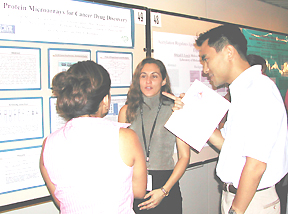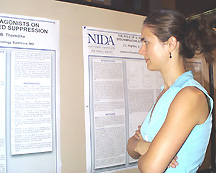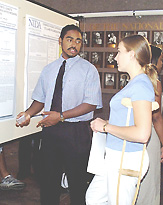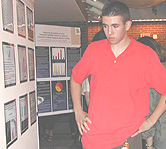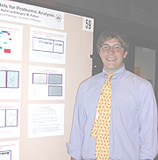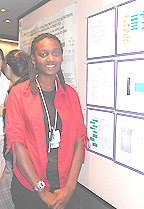
Stewart graduated from Henry E. Lackey High School in Indian Head, Md., and spent her summer up to the elbows in DNA before heading to Lebanon Valley College in Annville, Pa., in the fall. Ask her what she wants to be "when she grows up," and she replies with no hesitation: "A forensic specialist for the FBI." It is no surprise, therefore, that she designed her own summer project.
While trying to understand the technology behind DNA forensic fingerprinting with short tandem repeat loci, Stewart simulated a crime scene by mixing different samples of human DNA and exposing them to environmental insult—varying degrees of temperature, darkness and light, overdrying, and contamination with animal DNA, for example. She performed PCR with a multiplex primer mix and analyzed the samples by DNA electrophoresis.
She says she will major in chemistry and molecular biology—and she wants to come back to NIH next summer.
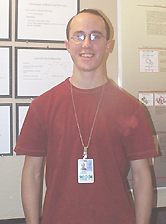
Working on a project that has become a hot commodity in the world of medical research, Maklan used a retroviral system to mediate delivery of short hairpin RNA for RNA interference in mammalian cells, thus disabling the cell from expressing the corresponding protein.
A biology major at Brandeis University in Boston, where he is entering his junior year, Maklan has set his sights on going to medical school.
LaToya Stewart
"The Technology Behind DNA Forensics: Fingerprinting with Short Tandem Repeat (STR) Loci"
Preceptors: Craig Chang and Kuan Wang Laboratory of Muscle Biology, NIAMS
Eric Maklan
"Retroviral Mediated Delivery of Short Hairpin RNAs for RNA Interference in Mammalian Cells"
Preceptor:Vittorio Sartorelli, Laboratory of Muscle Biology, NIAMS
